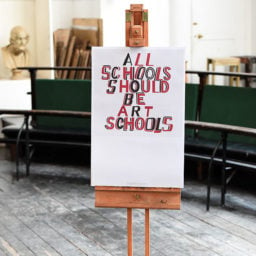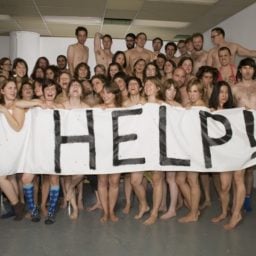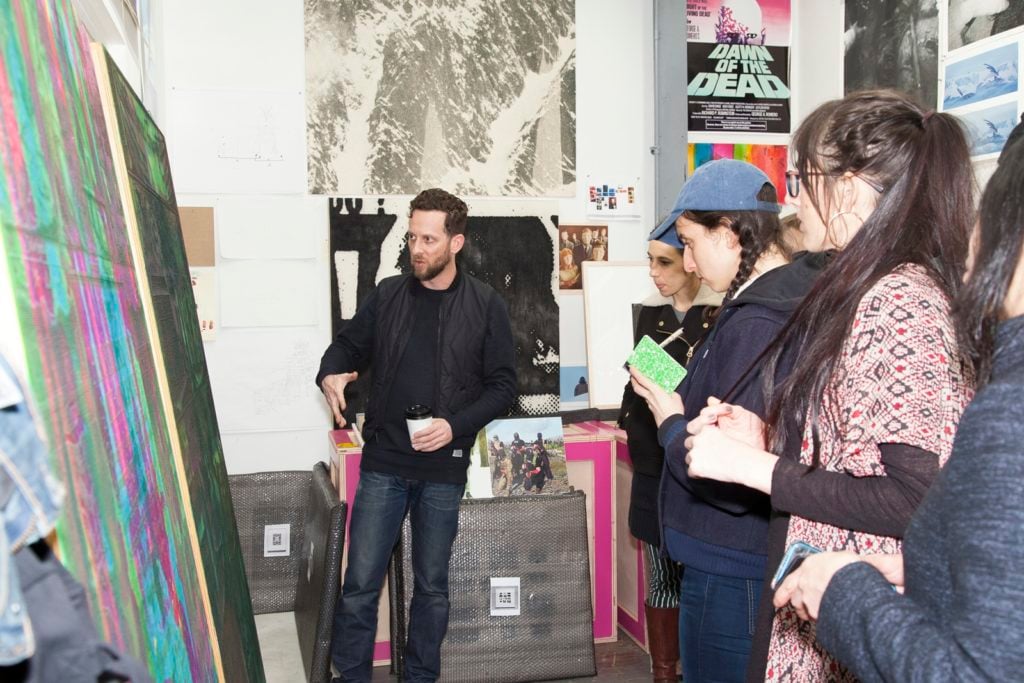

Across the country, art schools have minted a growing number of visual art MFA programs over the last 10 to 15 years. Many of them now face a challenge, as application numbers and enrollment figures are falling, according to the better part of a dozen insiders who spoke to artnet News, some of them on condition of anonymity.
“This year is the worst in memory, like perhaps in this millennium,” said one MFA program head, adding that his impression is that schools that were once getting two applications for every seat may now be getting less than one. “Selectivity rates will go down in lockstep with that decline,” said a dean at a storied Midwest art school, meaning programs that have touted their exclusivity may have less to offer, at least in that regard.
The increase in number of MFA programs has been dramatic. New York’s School of Visual Arts, for example, had just four graduate programs two decades ago. By 10 years ago, the school had doubled that number, and by five years ago that number had nearly doubled again. Today, the school hosts 11 MFA programs among its 21 graduate programs, which accommodate over 600 students (and which also include specialties in art education and art therapy). The school even has MFAs in both fine arts and art making.

The Pacific Northwest College of Art. Photo via Wikimedia Commons.
On the West Coast, Pacific Northwest College of Art, in Oregon received a $15 million grant from the Ford Foundation in 2007 in order to found some half-dozen graduate programs, five of them MFAs. (The school made headlines this fall when it abruptly suspended its MA program due to what it called low enrollment.) These are just two of numerous examples.
Will such schools, some of which may have bought into a business model predicated on continuing growth, find themselves in the lurch as enrollment numbers drop?
Specific numbers on a national scale for such a specialized area are hard to come by. One group that studies this area, the Council of Graduate Schools, based in Washington, DC, collects application data, but MFA visual art programs are grouped together with performing arts and humanities programs, for example. US News and World Report, known for its college and graduate school rankings, wasn’t able to offer specific numbers.
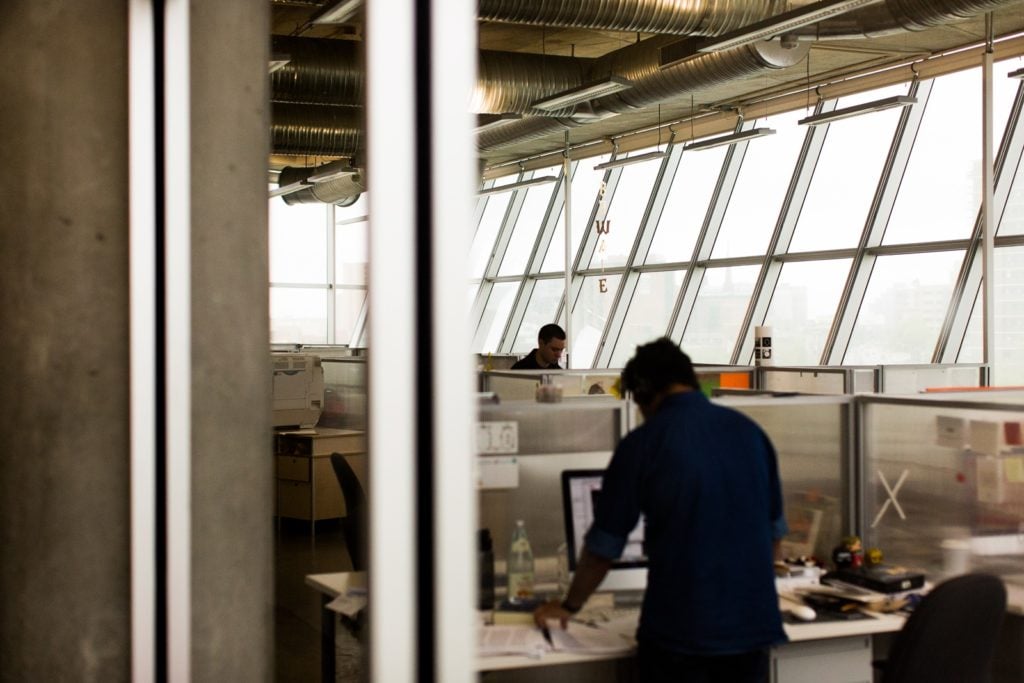
Studios at the Maryland Institute College of Art (MICA), in Baltimore. Courtesy MICA.
Deborah Obalil, president and executive director of the Association of Independent Colleges of Art and Design, a consortium of 42 art schools in the US and Canada, says that at the schools in her organization, enrollment numbers have been holding steady. She stressed in a phone interview that the organization offers a small sampling, and acknowledged that the increase in number of graduate programs means that even if enrollment numbers are steady, there are more graduate programs competing for those students, resulting in lower enrollment numbers.
Off-the-record conversations with art educators nationwide suggest that application numbers overall began to drop with the market crash, in 2008, and that they haven’t recovered.
Within the art world, debates have raged recently about the value of the MFA, with skeptics from artist Coco Fusco to critic Jerry Saltz casting doubt on whether the degree is worth it, or even necessary. “Sometimes you have students taking out a ton of loans to pay tuition,” one teaching artist said, “so there are really moral questions about these programs now.”
Those questions could turn from hypothetical to existential as application and enrollment numbers drop, and tuition dollars dry up.
Schools are already experiencing a decline in applications, resulting from demographic shifts.
“Birth rates have been affecting our undergraduate application rates for years,” said Maryland Institute College of Art (MICA) Dean of Admission and Financial Aid Theresa Bedoya, while stressing that application numbers to both graduate and undergraduate programs have been robust enough so as not to impact enrollments or selectivity at her school. MICA offers 10 MFAs among its 19 degree-granting graduate programs.
And the problem that many schools are seeing now will likely get worse.
“There is a statistical dropoff, which is projected to take place through 2025, in the number of US students of college age,” said one department head. “My understanding is that those numbers are going off a cliff. We’re headed for the end of a baby boom. There are macroeconomic forces at play that are conspiring to roil higher education profoundly.”
Faced with the decline in US students of graduate school age, many institutions have turned to international students to bolster enrollment numbers. “International enrollment now, for the first time, represents the majority of our graduate enrollment,” said Javier Vega, executive director, office of admissions and student affairs at the School of Visual Arts. But, said fine arts graduate program head Mark Tribe, that’s hardly just a compensatory or financial move. “I’m actively interested in having an international student community, as well as an international faculty,” he said.
Some art school instructors say there’s a downside to such a large influx of foreign students, especially from Asia, who may come to the US with insufficient English skills and who may not be prepared for tough critique sessions.
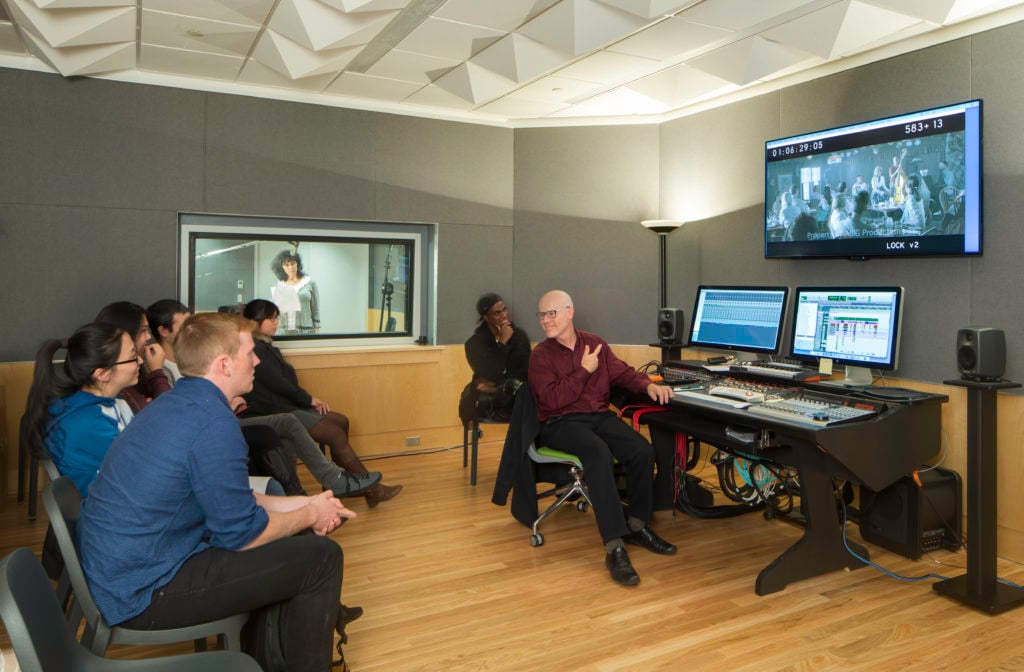
Facilities at Maryland Institute College of Art (MICA). Courtesy MICA.
Some graduate school candidates may be making hard decisions about whether to take on increased debt, as student debt has reached crisis levels.
Others, as the recovery from the Great Recession takes hold, may be finding job opportunities that are enticing enough to make graduate school seem unnecessary, at least for now, said Vega, who, having worked at the school for over two decades in various posts, maintains his school has not seen a significant recent drop in application numbers, though he does concede that the school has experienced “a little softness” in the numbers since its peak year of 2014.
Artist Michael Rakowitz, who teaches at Northwestern University, attests to a definite drop in graduate school applications at his institution. “It’s happening across the humanities,” he says, attributing some of that to increased promotion of so-called STEM fields—science, technology, engineering, and math. (Some humanities advocates have lobbied for expanding the acronym by adding the arts and rebranding as STEAM.)
The rise in number of graduate programs is due to several factors. Some educators pointed out that it’s a feather in a dean’s cap to start a graduate program. MFA programs confer prestige on a school, burnishing its reputation, and are relied upon as effective advertisements in recruiting for undergraduate programs—which, being larger, employ the lion’s share of the schools’ faculty.
The growth in number of MFA programs combined with the drop in students presents an unsustainable scenario. But not everyone sees that as such a bad thing.
“Education in this country is in dire need of radical change,” said MaryAnn Santos, senior advisement and student affairs administrator in the art department at New York University’s Steinhardt School. “So many students come out like indentured servants. If the demographic is smaller, maybe that will help move the country in that direction.”
“Some programs will die,” said a New York curator, educator and designer, placing the problem in the context of unsustainable growth in the art world. “Artists are trained to exhibit their work, which requires an infrastructure of museums and galleries, which require patrons and buyers, but we all know that overproduction is now the norm. One way to deal with that is to stop producing so many artists.”
“There are certainly MFA programs that have gone quietly out of business,” one expert pointed out.
One teaching artist sees it differently. “There will always be bad artists with a lot of money who want to go to art school,” she said.
More affordable or free programs (as well as alternatives, such as the Bruce High Quality Foundation University) begin to look like a better option, and those programs may weather the storm well. In December, Mason Gross School of the Arts, at New Jersey’s Rutgers University, announced that all MFA students would receive full out-of-state tuition grants for their first year and full in-state tuition for their second year. University of California at Irvine graduate program director Simon Leung, for his part, says that the school, which is tuition-free, has seen steady application numbers even as his colleagues have seen a decline.
Newer programs will be in the most precarious position, one insider said. “Reputation takes years or decades to build,” he said. “There will be a winnowing.”

